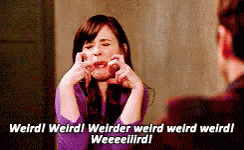Campbell, Olivia. “Why Gender Stereotypes In Kids’ Shows Are A REALLY Big Deal.” Refinery 29. 5 Dec. 2017.
This source focuses on the misogyny that is seen through the gender stereotypes in children’s television. It discusses how men are usually portrayed as more powerful than women and females are more timid. This source is important because it links the portrayal of men and women to problems later in life such as domestic and sexual violence. It discusses the importance of how things are shown in television because sexist and misogynistic representations can lead to a development of sexist attitudes which can cause further problems late in life. Since television is where children get an abundance of their information, what is portrayed on the screen is very crucial. This source focuses more on the psychological impact of the gender representation on screen in comparison to the other sources. This article would be valuable to analyze how certain ideas and how they are communicated can cause events later on in life.
Hains, Rebecca C. “Inventing the Teenage Girl: The Construction of Female Identity in Nickelodeon’s My Life as a Teenage Robot.” Popular Communication 5.3 (2007): 191-213. ProQuest. 18 Sep. 2018 .
This source focuses on a modern TV show that would be classified as a TV show for “Tweens” or other wise known as young teenagers. This TV show airs on Nickelodeon and focuses on a female robot who is powerful and strong as a main lead. The main character is strong and talented while still embracing her femininity. This is a concept that is usually unheard of for female characters to be both powerful and feminine on television till this new era of television. This source does a great job of showcasing an example of a television show that breaks gender norms and showcases a powerful female character to the current young audience. The source is also valuable because it offers research on the response from teenage girls, who are the targeted audience and how they respond to the positive and different message that this show offers. This article would be a great example of pro-feminist children’s media.
Hains, Rebecca C. “THE PROBLEMATICS OF RECLAIMING THE GIRLISH: THE POWERPUFF GIRLS AND GIRL POWER.” Femspec 5.2 (2004): 1,39,216. ProQuest. 18 Sep. 2018 .
This source discusses the rise of feminism and the idea of girl power but includes a fantastic example of how the Powerpuff Girls, a popular kids television show from the early 2000’s showcased characters that were the epitome of girl power to a young audience. It represented to kids that girls could also be “tough and hardcore”. This source is valuable because it represents a prime example of how children’s television can go against normal gender stereotypes and show an image of women and girls that is atypical from what is usually seen in children’s television, where girls are usually seen as delicate and feminine. However, this source is also important because it highlights the flaws of the origins of the shows and how it ends up contradicting itself in the end regardless. This shows how even though feminist television is being produced, there are still many flaws to be corrected in order to break gender norms.
Kahlenberg, Susan G., and Michelle M. Hein. “Progression on Nickelodeon? Gender-Role Stereotypes in Toy Commercials.” Sex Roles 62.11-12 (2010): 830-47. ProQuest. 18 Sep. 2018
This source focuses on how toy commercials enforce gender norms and barriers on toys and use this to their marketing benefit. This source uses data and actual analysis to show how different toy commercials used a variety of factors like age, setting, type of interaction etc. in order to sell a certain product. It discusses how certain toys and products were portrayed as “girl” or “boy” toys and the difference in ways that these things were marketed. This source is important and valuable reading because it delves into how companies will use television as a way to instill certain ideas, norms and barriers into children’s minds in order to sell their product and maximize their profit. It provides examples on various types of commercials and how girls were portrayed versus how boys were portrayed. These differences are important to analyze to see how television and commercials are still enforcing the unequal social construct.
Perea, Katia. Girl Cartoons: A Playful Transgression on Popular Culture’s Compulsory Gender Coding. Order No. 3458313 New School University, 2011 Ann ArborProQuest. 18 Sep. 2018
This source focuses on shows, specifically cartoons, and delves into how these shows go against gender norms that TV shows usually reinforce for children. The writers and creators of these shows use the many creative ways to represent cartoon characters in order to enforce new ideas of gender norms for children watching these television shows considering that a lot of what we perceive as children makes up our thought process when we are adults. This source is worth reading because it focuses on how things such as feminism and gender representation show up in the animated side of television. Also, it shows how characters are constructed, specifically female characters, both minor and major, and how they represent different themes and ideals. This source also gives many great examples of how girl cartoon characters represent qualities such as power and leadership and go against typical standards. It discusses these concepts in relation to what we typically perceive of women in television.
Smith, Jennifer M. “She’s Just Being Riley: The Sexual Politics of Girl Meets World.” Antenna, 3 July 2014
This article discusses the problems with a specific TV show airing called Girl Meets World, which aims to center around a powerful girl center but fails to properly aim to break gender norms and deliver proper gender representation. This source discusses issues such as using sexual harassment against girls as humor and other types of offensive content against girls that is being delivered to young audiences. This source is important because it shows the issues with young adult television and relates them to actual problems in society such as sexism. This source is helpful as it shows how television writers will aim to produce female centered shows and subvert to normal sexist humor against women and go along with the same trend in television that has been occurring for decades. Girl Meets World would be a great example to use to describe the typical sexual offensive jokes made against women on television.





